Power Mac G4 (Original)
Processor: 350 mhz or 400 mhz PowerPC 7400 (G4, Yikes!/PCI Graphics), 350 mhz, 400 mhz, 450 mhz or 500 mhz PowerPC 7400 (G4, Sawtooth/AGP Graphics), 400 mhz, 450 mhz DP or 500 mhz DP PowerPC 7400 (G4, Gigabit Ethernet)
Floppy Disk drive: iOmega Zip Drive (Optional)
Optical drive: 32x CD-ROM or DVD-ROM (Yikes!/PCI Graphics), 32x CD-ROM, DVD-ROM or DVD-RAM (Sawtooth/AGP Graphics), DVD-ROM or DVD-RAM (Gigabit Ethernet)
Standard memory: 64 megabytes, 128 megabytes, 512 megabytes or 1 gigabyte (Yikes!/PCI Graphics), 64 megabytes, 128 megabytes, 512 megabytes, 1 gigabyte or 2 gigabytes of SDRAM (Sawtooth/AGP Graphics, Gigabit Ethernet)
Upgraded memory: 1 gigabyte (Yikes!/PCI Graphics), 2 gigabytes (Sawtooth/AGP Graphics, Gigabit Ethernet, Only 1.5 is seen on Mac OS 9 due to limitations in the software)
Display Support: Single Display
Resolution Support: 1600×1200 (Yikes/PCI Graphics, Sawtooth/AGP Graphics), 1920×1200 (Sawtooth/AGP Graphics, 500 mhz, Gigabit Ethernet)
Case Type: Tower
Video Card: ATI Rage 128 with 16 megabytes of VRAM (Yikes!/PCI Graphics), ATI Rage 128 or ATI Rage 128 Pro with 16 megabytes of VRAM (Sawtooth/AGP Graphics), ATI Rage 128 Pro with 16 megabytes of VRAM or ATI Radeon with 32 megabytes of VRAM (Gigabit Ethernet)
Ports (Yikes!PCI Graphics): 1x VGA port, 2x USB 1.1 ports, 2x FireWire 400 ports, 1x RJ-11 Modem port 1x RJ-45, Ehternet port
Ports (Sawtooth/AGP Graphics: 1x VGA port, 2x USB 1.1 ports, 3x FireWire 400 ports, 1x RJ-11 Modem port 1x RJ-45, Ehternet port
Ports: (Gigabit Ethernet): 1x VGA port, 1x ADC Port, 2x USB 1.1 ports, 2x FireWire 400 ports, 1x RJ-11 Modem port 1x RJ-45, Ehternet port
Original Price (Yikes! and Sawtooth): $1,599 (Yikes!/PCI Graphics, Sawtooth 350 mhz), $2,499 (Sawtooth 400 mhz (Later lowered to $1,599), Sawtooth 450 mhz), $3,499 (Sawtooth 500 mhz, Sawtooth 450 mhz (Later lowered to $2,499))
Original Price (Gigabit Ethernet): $1,599 (400), $2,499 (450 DP), $3,199 (500 DP, DVD-ROM), $3,499 (500 DP, DVD-RAM)
Hello there and welcome to 2020, everyone! What better way to start a new decade than looking back on one of the best retro Macs, the Power Mac G4! More specifically, the original Power Mac G4 that first came out in August 31, 1999 and was discontinued in January 9, 2001 with the introduction of the Digital Audio Power Mac G4s. I might do a separate article on each different model of the Power Mac G4 since it had a lot of changes in it’s 5 year lifespan. I’ll eventually get to reviewing the other models of the Power Mac G4 if I can obtain them. For now, let’s focus on the holy trinity of the original Power Mac G4 lineup. Long story short, in January of 1999, we were introduced to the Power Macintosh G3 Blue and White. I’ll talk about this computer in a seperate article. But, it was first professional grade Mac to follow the design trends of the iMac G3. The Power Mac G4 came out in August of 1999 and did away with the colourful aqua blue colour scheme in favour for a more professional looking “Graphite”. I say “Graphite” in quotations, because it looks more like a navy blue depending on how the camera hits it. The lower end Power Mac G4 came with a 400 or 350 megahertz PowerPC G4 processor. I might again do a seperate article on the Yikes G4 since it’s a computer with a PowerPC G4 processor on a Power Macintosh G3 motherboard minus the ADB Port. However, the higher-end G4s had a new motherboard design called Sawtooth. These Sawtooth macs performed much faster than the lower end Yikes G4 and they performed insanely fast as I’ll show you when I demonstrate it. The model that I’m talking about is the 450 megahertz model with the Sawtooth motherboard. Later in 2000, the original Power Mac G4 had little changes. It kept the same 400 megahertz processor for the lower end market except it had dual 450 and dual 500 megahertz avaliable and an added ADC port. ADC stands for Apple Desktop Connector. I don’t have one of those monitors to show to you guys. But, it was Apple’s second attempt to put ports on a monitor. The first was the Apple AudioVision display which was the only display to use the HDI-45 connector and hand an ADB port built-in. Both monitors were not very successful to say the least. Only the first generation Apple Cinema Display and Apple Studio Display monitors used this connector. Early 500 megahertz machines had the “Errata” glitch which corrupted the data path and took the computer down with it, oof! So yeah, that’s why they reduced the speeds to 350, 400 and 450 for a short period of time. Eventually, the damage was fixed and the original processor speeds were restored.
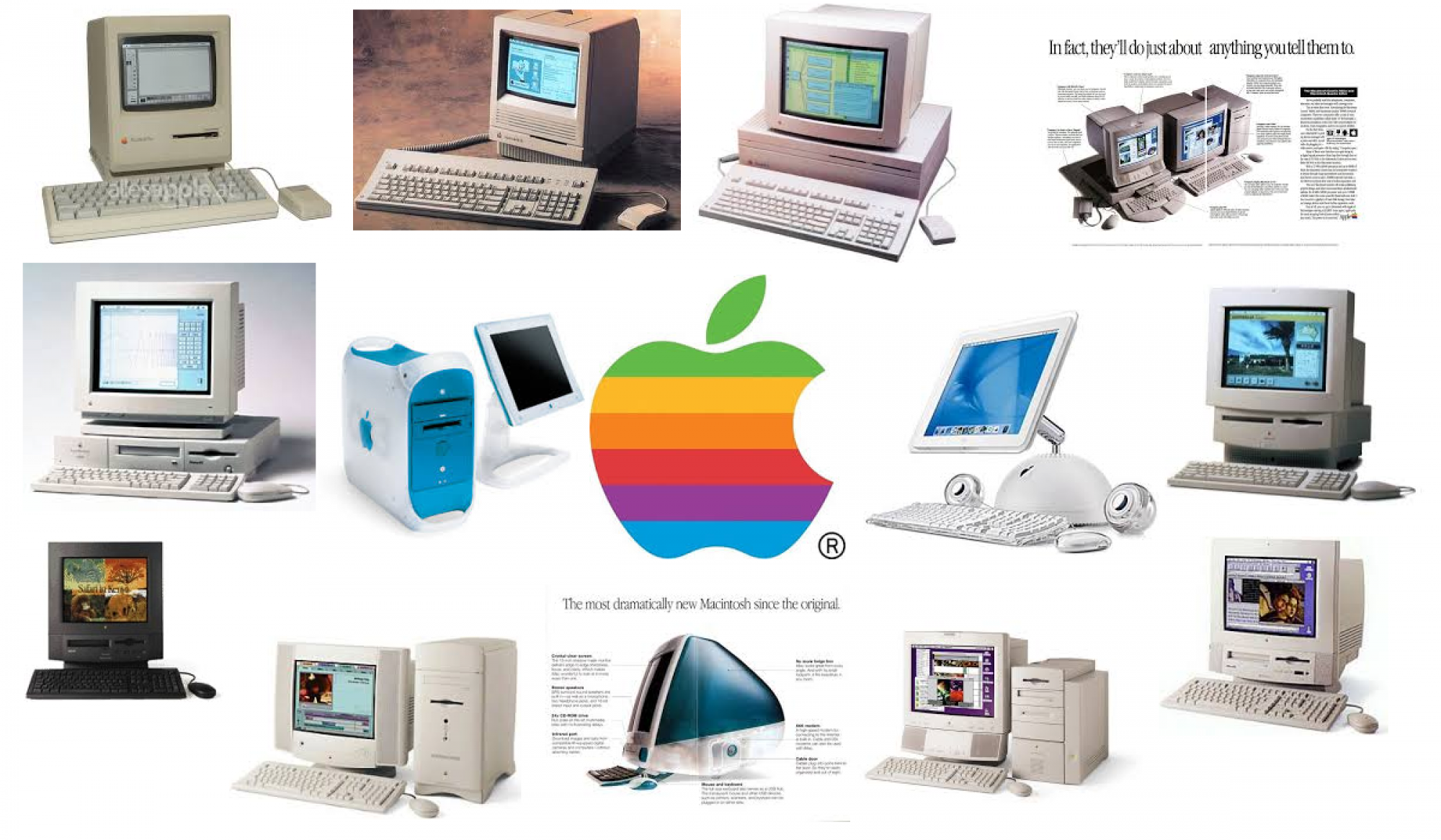
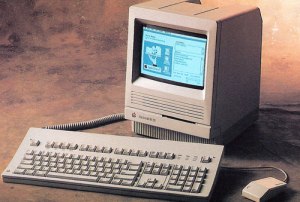
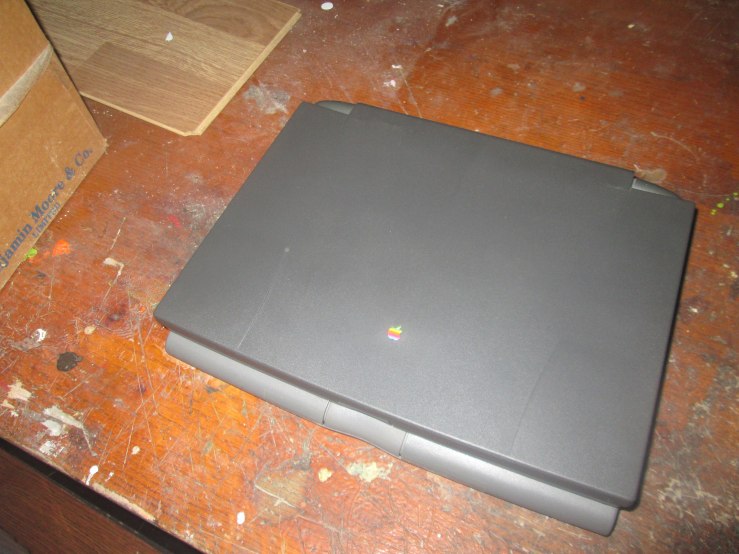 Hello there and welcome the Museum of Apple Computers, where I talk about Apple Computers. This year I decided not to do a Christmas special, but i’m going to review an old Apple laptop computer as a special christmas gift to you guys. The PowerBook 520c was not only the first PowerBook to come with a built-in trackpad, but it was also the first laptop computer ever made to come with a trackpad instead of a trackball and it also had color display instead of a monochrome display. At the time many laptops were still using monochrome displays and 8-bit audio, but the PowerBook 520c is the first ever laptop to be considered desktop replaceable. However this wasn’t the first PowerBook to include a color display. The PowerBook 165c which came only came a year before the PowerBook 520c also had a color display, but I always think that PowerBook 500 series made a bigger impact on the computer industry. The Powerbook 520c has a Motorola 68LC040, which is the low cost version of the Motorola 68040 processor. The only difference between the Motorola 68LC040 and the full Motorola 68040 Processor is that the full 68040 chip has a FPU where as the 68LC040 does not. Even the PowerBook 520c originally came with a Motorola 68LC040 processor, it can be upgraded to use a 183 megahertz PowerPC 603 chip, which is pretty cool if you’d ask me and there were plans make a PowerPC G3 upgrade for this laptop, but it was never produced, but the processor itself isn’t the only thing to be upgraded on this laptop, I’ve heard this model of the powerbook 500 series can be upgraded to use an active matrix display. It’s also interesting to note that this laptop was rated #2 of the all-time best PowerBooks, but this is only for the PowerBook 540c. The PowerBook 520c isn’t nearly as good as the PowerBook 540c, but it’s still a pretty good addition to the PowerBook family.
Hello there and welcome the Museum of Apple Computers, where I talk about Apple Computers. This year I decided not to do a Christmas special, but i’m going to review an old Apple laptop computer as a special christmas gift to you guys. The PowerBook 520c was not only the first PowerBook to come with a built-in trackpad, but it was also the first laptop computer ever made to come with a trackpad instead of a trackball and it also had color display instead of a monochrome display. At the time many laptops were still using monochrome displays and 8-bit audio, but the PowerBook 520c is the first ever laptop to be considered desktop replaceable. However this wasn’t the first PowerBook to include a color display. The PowerBook 165c which came only came a year before the PowerBook 520c also had a color display, but I always think that PowerBook 500 series made a bigger impact on the computer industry. The Powerbook 520c has a Motorola 68LC040, which is the low cost version of the Motorola 68040 processor. The only difference between the Motorola 68LC040 and the full Motorola 68040 Processor is that the full 68040 chip has a FPU where as the 68LC040 does not. Even the PowerBook 520c originally came with a Motorola 68LC040 processor, it can be upgraded to use a 183 megahertz PowerPC 603 chip, which is pretty cool if you’d ask me and there were plans make a PowerPC G3 upgrade for this laptop, but it was never produced, but the processor itself isn’t the only thing to be upgraded on this laptop, I’ve heard this model of the powerbook 500 series can be upgraded to use an active matrix display. It’s also interesting to note that this laptop was rated #2 of the all-time best PowerBooks, but this is only for the PowerBook 540c. The PowerBook 520c isn’t nearly as good as the PowerBook 540c, but it’s still a pretty good addition to the PowerBook family.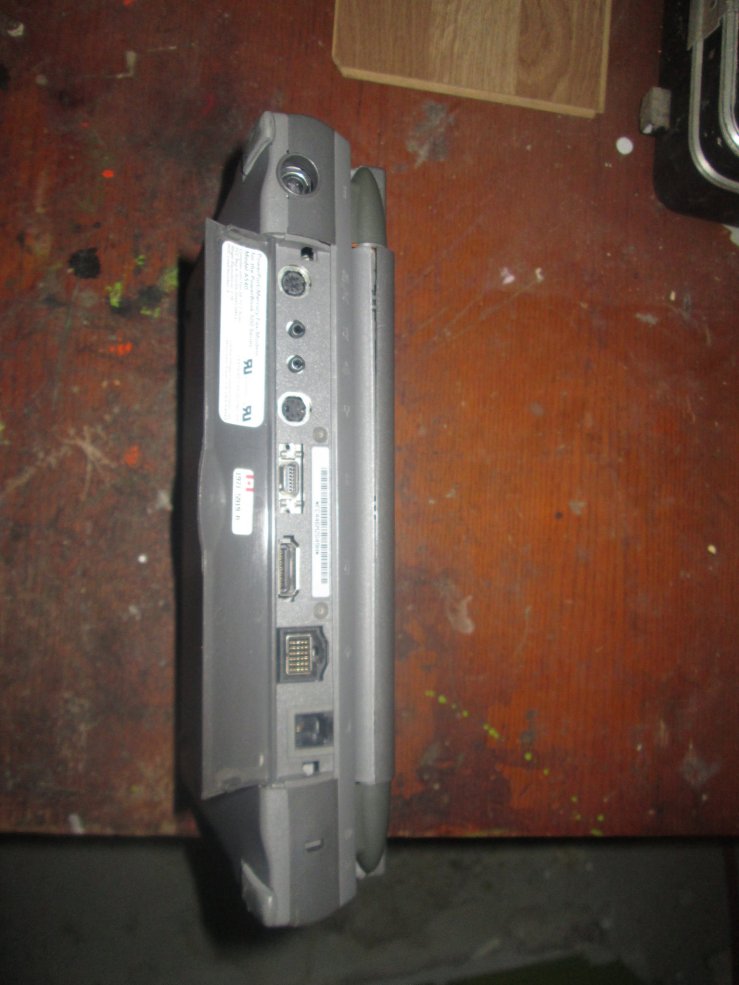
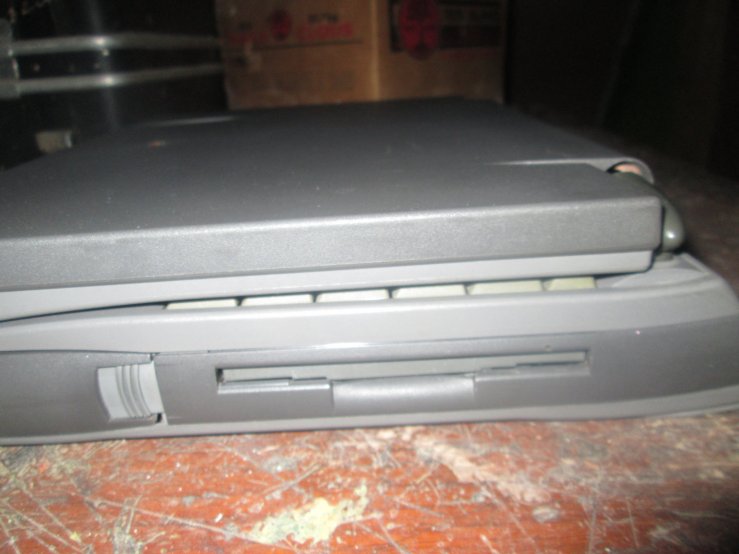 On the back for ports we have, ADB which was a standard for every apple computer produced before 1998, HDI-30 SCSI also known aka. a Scuzzy port, two serial ports for a printer and modem, microphone, sound in, a security lock and before it became an industry standard we have an AAUI-15 ethernet port, in fact this may be the first ever laptop computer to include an ethernet port. You’re not gonna find an USB ports or even HDMI ports on this computer, because it’s too old to have them. On the sides we have a 1.44 megabyte floppy disk drive dubbed as the “Superdrive” and it also has a thing where you can use two batteries, install custom modules or even install an FPU co-processor. The FPU Co-Processor module is pretty useful for all models in the powerbook series except for the PowerBook 550c, because the PowerBook 550c actually has the full Motorola 68040 processor, which already has an FPU built in. Another interesting thing about the PowerBook 550c is that it was only sold in Japan. For those of you who are too young to remember even remember having a computer with a floppy disk drive, a floppy disk is a square shaped disk that is usually used to store data and it’s also considered magnetic storage media. If you want to know how a typical floppy disk works, allow me to give you a demonstration.
On the back for ports we have, ADB which was a standard for every apple computer produced before 1998, HDI-30 SCSI also known aka. a Scuzzy port, two serial ports for a printer and modem, microphone, sound in, a security lock and before it became an industry standard we have an AAUI-15 ethernet port, in fact this may be the first ever laptop computer to include an ethernet port. You’re not gonna find an USB ports or even HDMI ports on this computer, because it’s too old to have them. On the sides we have a 1.44 megabyte floppy disk drive dubbed as the “Superdrive” and it also has a thing where you can use two batteries, install custom modules or even install an FPU co-processor. The FPU Co-Processor module is pretty useful for all models in the powerbook series except for the PowerBook 550c, because the PowerBook 550c actually has the full Motorola 68040 processor, which already has an FPU built in. Another interesting thing about the PowerBook 550c is that it was only sold in Japan. For those of you who are too young to remember even remember having a computer with a floppy disk drive, a floppy disk is a square shaped disk that is usually used to store data and it’s also considered magnetic storage media. If you want to know how a typical floppy disk works, allow me to give you a demonstration.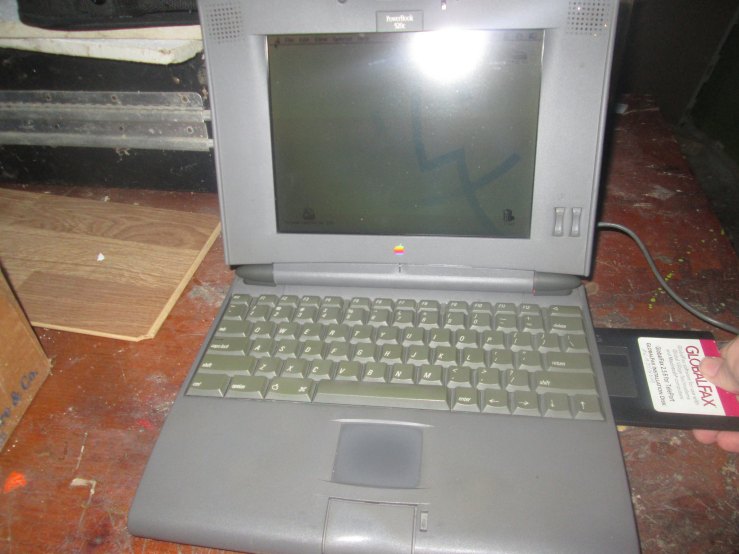 All right, here’s how it works. You put the disk into the computer and it usually makes a sound whenever you put it in. Once you have put it in, you can access the files put onto the disk itself, now I’ll show you how to eject the disk. The way you eject disks on the Mac OS is rater unorthodox, you just drag the disk icon to the trash can and there you go, the disk is finally eject. If you don’t this method, you can also go on the tab and click “Eject disk”.
All right, here’s how it works. You put the disk into the computer and it usually makes a sound whenever you put it in. Once you have put it in, you can access the files put onto the disk itself, now I’ll show you how to eject the disk. The way you eject disks on the Mac OS is rater unorthodox, you just drag the disk icon to the trash can and there you go, the disk is finally eject. If you don’t this method, you can also go on the tab and click “Eject disk”.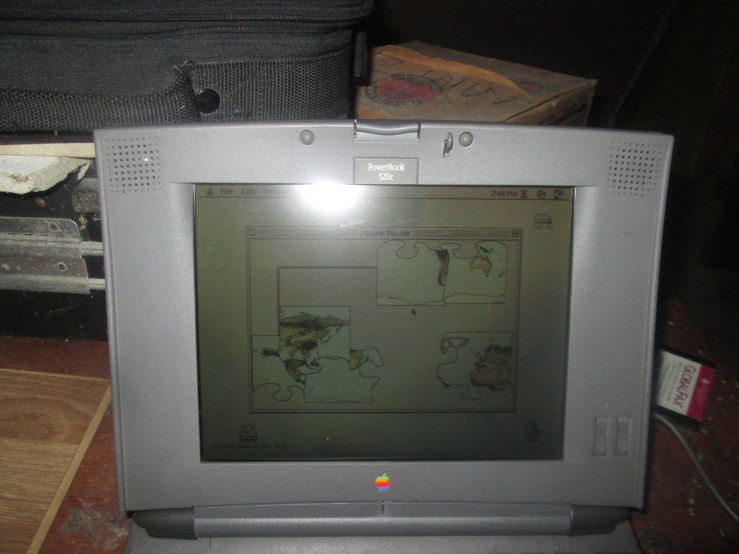 The PowerBook 520c is hooked up and ready to go. In order to boot up this computer, you simply press on the power key. We are now booted into the operating system itself and it boots up pretty darn fast, even for a computer that has a 25 megahertz processor. Just every other Macintosh computer that uses a 68040 processor, it can only run up to Mac OS 8.1, but this one I have is running Mac OS 8.0. Let’s test the sound by using simple sound, shall we?. The interesting thing this is PowerBook that I have came with some extra sound effects. I assume that the original owner for this computer added these sound effects in SimpleSound, because I don’t think they originally came with the computer itself. As you can tell, the sound is pretty good for a laptop that came out in 1994 and it’s definitely better than any of the other laptops that came out during this era. Let’s play some good old jigsaw puzzle. Were going to do the easy puzzle, because this is just a quick demonstration. Yes, this laptop comes with a passive matrix display, but for a computer to have a passive matrix display, it’s actually pretty good. Notice how it doesn’t fade in as much as other passive matrix displays did and there’s no quote on quote “ghosting”. Yes, I have officially declared myself the master of puzzles, now that I have given you a demonstration on this laptop, lets power it down.
The PowerBook 520c is hooked up and ready to go. In order to boot up this computer, you simply press on the power key. We are now booted into the operating system itself and it boots up pretty darn fast, even for a computer that has a 25 megahertz processor. Just every other Macintosh computer that uses a 68040 processor, it can only run up to Mac OS 8.1, but this one I have is running Mac OS 8.0. Let’s test the sound by using simple sound, shall we?. The interesting thing this is PowerBook that I have came with some extra sound effects. I assume that the original owner for this computer added these sound effects in SimpleSound, because I don’t think they originally came with the computer itself. As you can tell, the sound is pretty good for a laptop that came out in 1994 and it’s definitely better than any of the other laptops that came out during this era. Let’s play some good old jigsaw puzzle. Were going to do the easy puzzle, because this is just a quick demonstration. Yes, this laptop comes with a passive matrix display, but for a computer to have a passive matrix display, it’s actually pretty good. Notice how it doesn’t fade in as much as other passive matrix displays did and there’s no quote on quote “ghosting”. Yes, I have officially declared myself the master of puzzles, now that I have given you a demonstration on this laptop, lets power it down.